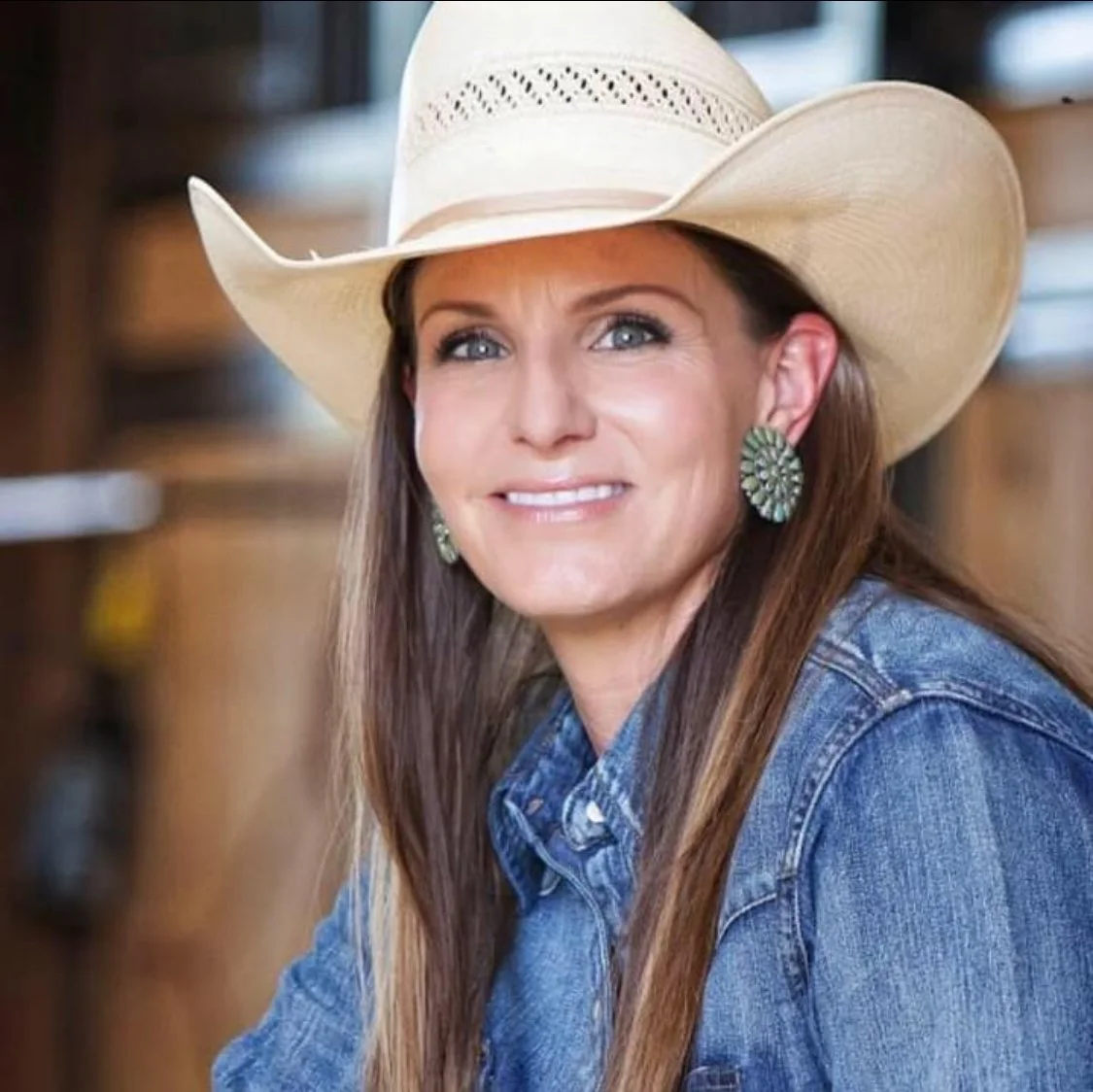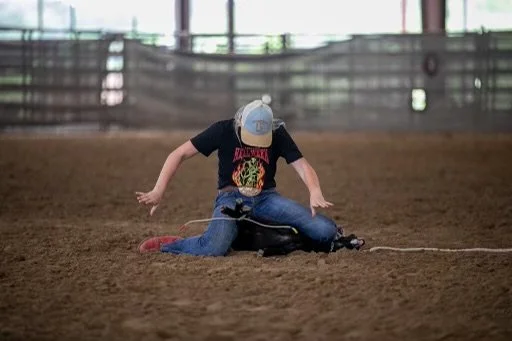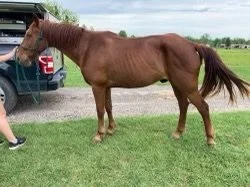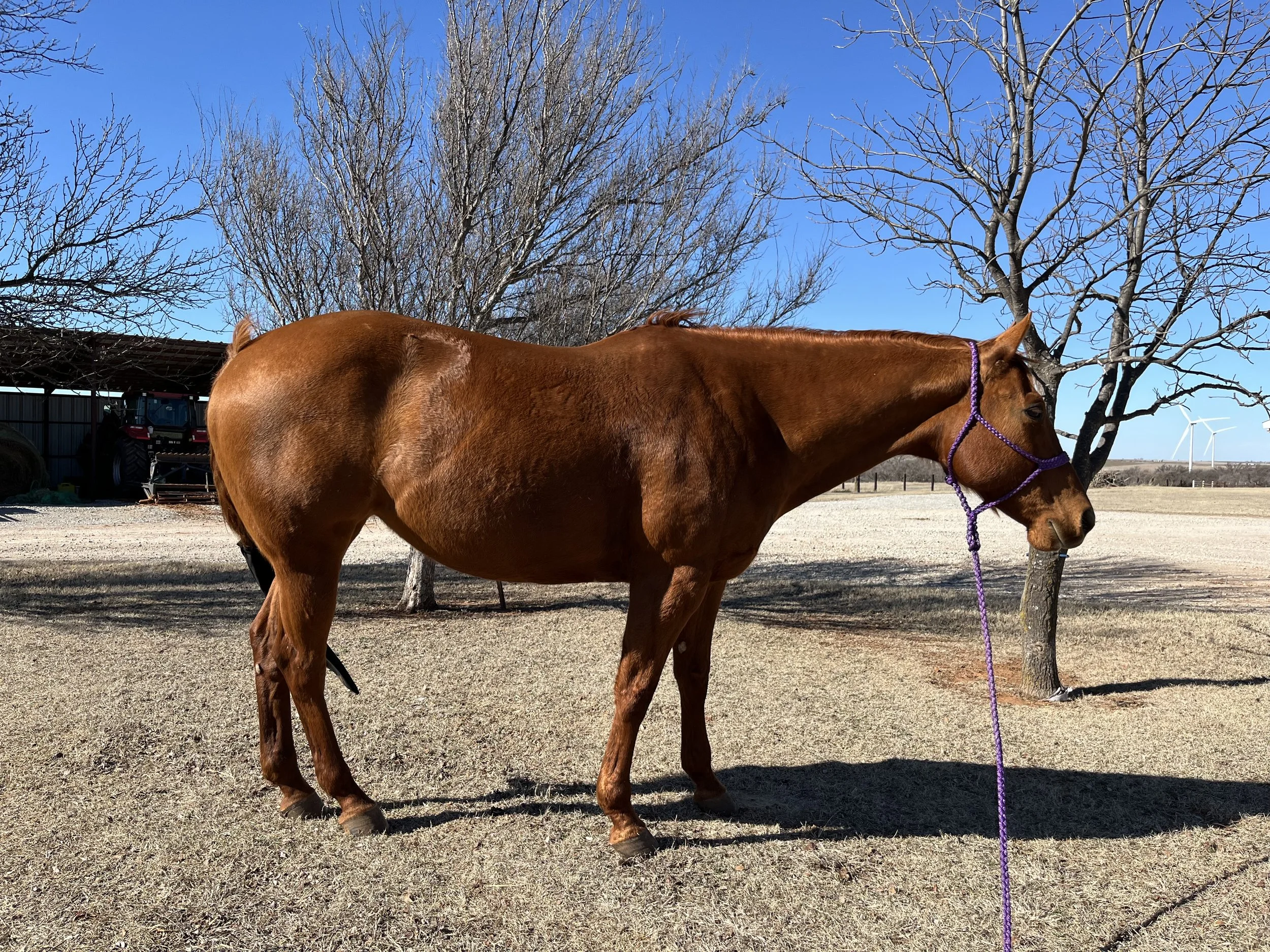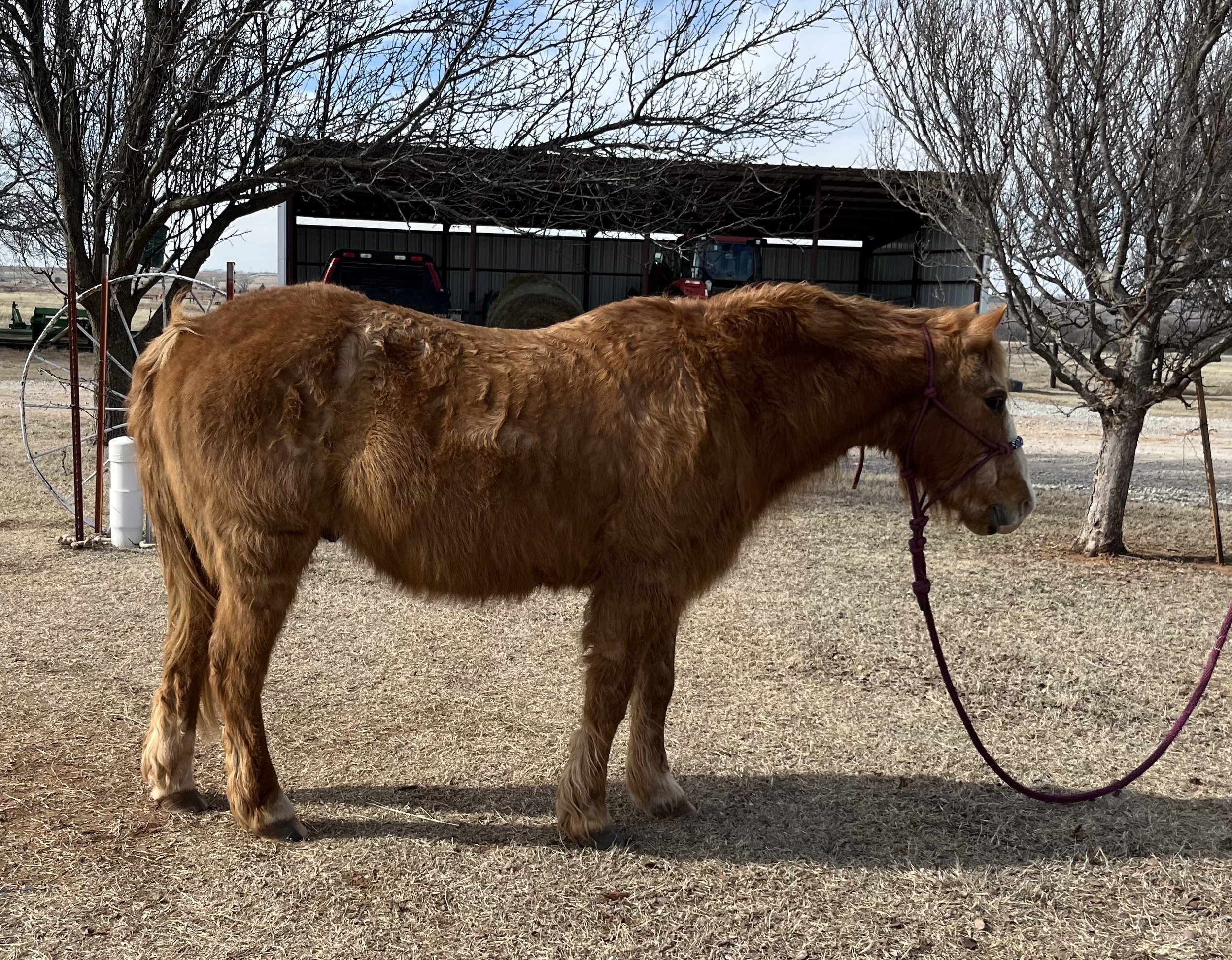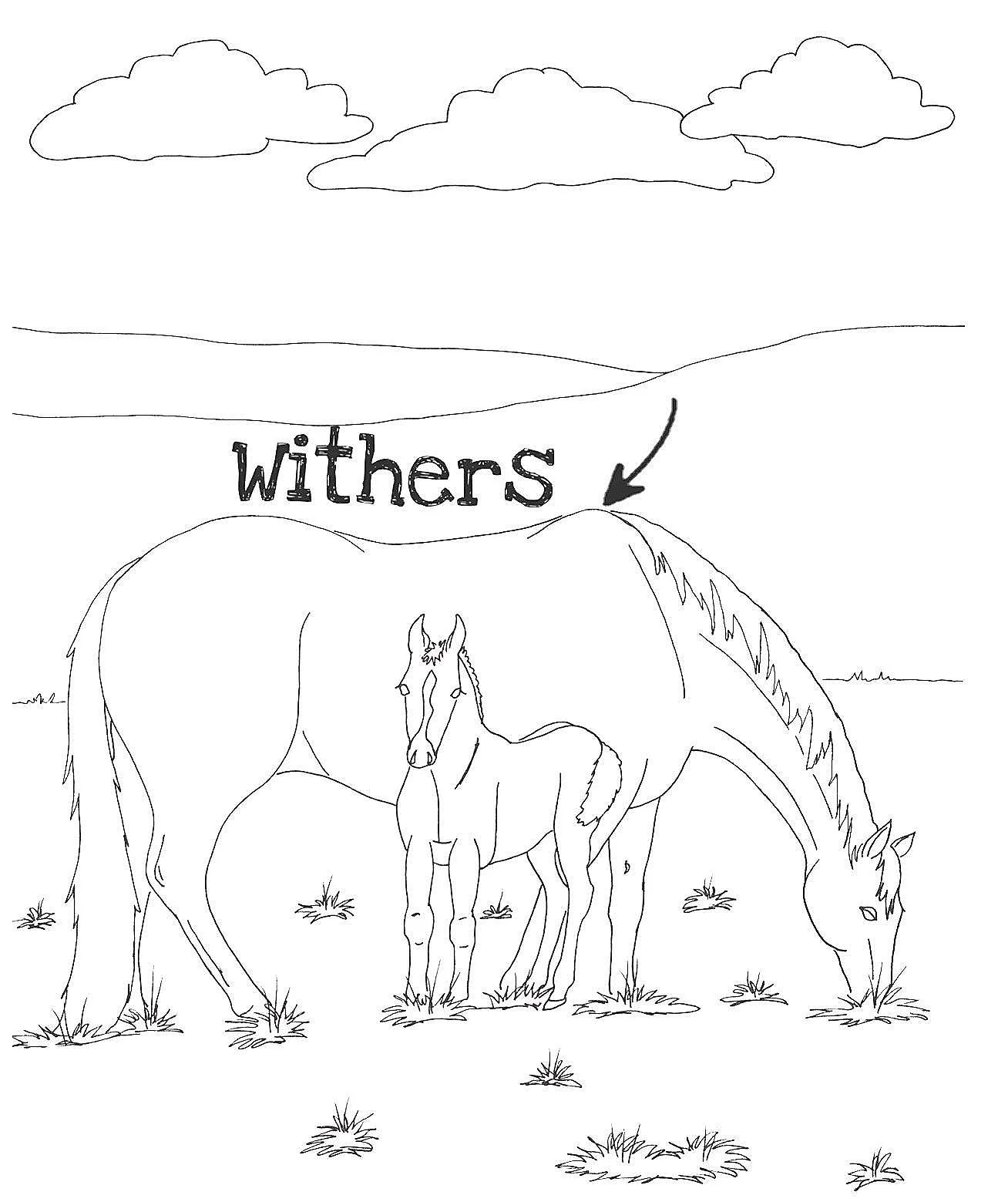Cowkids Only - February 2024
February 2024
Brought to you by The Bell Mare Book Company
Ask a Pro:
Stacey Elias Martin
This month’s blog features goat tying clinician and owner of Next Level Clinics, Stacey Elias Martin. Stacey puts on at least 30 clinics across the United States each year and has helped thousands of youth goat tiers accomplish their goals, including her own son, who was a Texas state champion. She has been training horses and coaching goat tiers for 20 years and was kind enough to share some of her advice with us.
Whether you are a girl goat tier looking to move up the ranks in your event, or a boy goat tier working your way up to tying calves, Stacey has great information for you below!
Ask a Pro:
Goat Tying Clinician Stacey Elias Martin
Question: What are some basic get-off fundamentals you think all goat tiers should practice?
Stacey’s Answer:
First off, how you hold your reins matters. You should have your reins in a loop and they should be in your left hand. Your right hand should be on the saddle horn. Your left hand needs to be forward - towards your horse’s ears and your hand should not be touching your horse’s neck. When you hit the ground, try to land on your toes, not your heels. Landing on your toes will keep you from falling down as often because it is a more athletic position than being on your heel.
For kids who get-off on the run:
This is a good drill to practice correct hand position:
Put your horse on the outside edge of your arena with the fence on the right side of your horse.
Extend your right leg out over the horse’s midline - imagine a line from their ears to their tail - that is the midline.
Ride your horse with your leg extended and practice keeping your balance with your rein hand up and off the neck.
Start at a walk, then move to a trot, lope, etc. as you get better.
Once you have mastered keeping control of your left hand, start getting off your horse.
Make sure you land on your right toes first. You shouldn't land on your heels or both feet at the same time.
Keep your heart in front of your belt buckle so you can take the momentum your horse is going to throw at you.
Your horse should not change speeds at all as you do this drill.
(See video below for further instruction.)
For kids who stop their horse to get-off: Something I see a lot of kids do is landing with both of their feet hitting the ground at the same time. If you land with both feet at the same time, you can’t run. There will be a pause between when you get off your horse and when you start running to the goat. You also are more likely to fall. Your swing foot, whichever foot you take out of your stirrup and swing over the horse’s rump, should hit the ground first. Then the foot you leave in your stirrup the longest, should hit the ground second. Try to land both feet on your toes, not your heels. This puts you in a running position as soon as you hit the ground. Practicing this going around the outer edge of the arena is a great way to perfect this skill. If you get off on the right, you want the fence on the left side of your horse. If you get off on the left, you want the fence on the right side of your horse. Start at a walk and practice landing with one foot and then the other and hitting on your toes and not your heels. If you set up cones, or pick spots on the fence, that can help improve your timing with your horse so you can start to get off as your horse is stopping to improve your times. (See video below for further instruction.)
Question: What fundamentals do you think kids need to work on when they flank the goat?
Stacey’s Answer:
Roll the goat up high enough out of the ground that the back legs hit your right shoulder. When you set the goat down, they should be straight. Don't turn the goat in the air. The goat’s spine, or backbone, should be in a straight line with the rope. If you turn the goat, you will sometimes lose the goat’s legs underneath you. This especially happens on smaller, shorter-legged goats. Keeping the goats straight and not twisting them is less stressful for the goat and they are more likely to lie still and take the tie versus straining and kicking when they hit the ground.
For girls, if you are big enough to catch your flank, you need to beat the back legs to the ground with the goat’s front leg. This allows you to keep the goat straight and you can get your legs gathered using the front leg versus turning the goat to “stuff” them. Keep in mind, if you are 7 to 10, there is a good chance, you are not big enough to catch your flank yet. Just because you see the junior high and high school girls do something, that doesn’t mean you are big enough to do it just yet. If you can, great! But, don’t get discouraged if you can’t. You will grow big enough eventually.
The slow-motion video below shows how to beat the goat’s back legs to the ground with their front leg, so the three legs are already gathered when you hit the ground. This is for girls who are big enough to catch their flank and don’t have to gather the legs after the goat hits the ground.
If you are not big enough to catch your flank yet, or are a boy tying with a piggin string, you still want the back legs to hit you in the right shoulder during your flank and then lay the goat down in a straight line with the rope. When you gather the back legs, grab the bottom back leg first. If you grab the bottom back leg, the top leg will come with it. The back legs need to cross the front leg between the goat’s ankle and knee with the top back leg in front of the bottom back leg. (See video below).
Question: What advice do you have for kids on their tie?
Stacey’s Answer:
For most young girls, I recommend starting out with a softer, two-strand string. Soft strings are better at closing up and keeping the legs held together while you tie. Stiff strings are more difficult to tie with and can lead to bad habits. As you wrap the legs, keep your motions with your hands small and close to the goat’s legs and your eyes focused on the pinky of your left hand. When you finish your tie, your knot should be on the bottom and your hands should be parallel with the ground. You shouldn’t pull your string tight with one hand higher than the other. If you don’t keep your hands level, you can actually loosen your tie instead of pulling it tight. Also, your run is not over until the goat stays tied for six seconds. Don’t get in such a hurry, that you don’t stay down over your goat until your tie is completely finished. (See photo below).
For the boys, goat piggin strings are pretty much all the same. One thing I do recommend for the boys’ strings is to “break down” the eye when you first get a new string. Pull the loop down small and then break the fibers of the string down a little bit with your hand so the string will close down on the front leg easily. (See video below).
Boys also need to flank the goat high enough that the back legs hit them in the right shoulder. After boys flank the goat, they should keep the front leg as low to the ground as possible. A goat is a prey animal, so when you pull the front leg up high it rolls them onto their back, which can make them panic and want to strain to get away from you. Keeping the front leg low is faster and more comfortable for the goat. When you gather, it is the same idea. Keep the legs flat and low to the ground. If you watch today’s tie-down ropers, many of them are keeping the legs lower to the ground because it is faster. Twenty years ago, the ropers used to pull the legs up, but that isn’t how today’s top tie-down ropers are gathering their calves. Remember distance is time, is money. Same thing goes for when you lay your string out. Take the smallest motion possible. Pull your string straight out to pull it tight and then lay the string out just far enough to be out of your way and no further. (See video below).
Question: What advice do you have for kids on competing under pressure?
Stacey’s Answer:
When you are competing, it is hard to think about everything you have to do. That’s why it is so important to do the correct fundamentals over, and over, and over again in the practice pen. That is how you train your muscles to do the right thing, so that when you are competing, you can just react. I love the quote from the movie Top Gun that says, “You don’t have time to think up there. If you think, you’re dead.” What that means for goat tiers is, if you are taking the time to think during your run, you are probably costing yourself time. Put the work in ahead of the rodeo so that you are physically and mentally strong and then during your run, just let muscle memory take over and compete. I also think it is important that you don’t enter so many rodeos, you don’t have time to develop good habits in the practice pen. If something is going wrong, you probably aren’t going to fix it in the heat of competition. You need down time between rodeos to build good muscle memory in the practice pen. That said, don’t practice yourself until you are tired. Spend about 20 minutes practicing and then walk away and give your mind and body a break. If there is something you really need to work on, come back and practice again later. But, drilling yourself beyond 20 minutes can lead to bad habits because your body and mind gets tired and you start making mistakes instead of practicing correctly.
Question: If you could get in a time machine and tell your younger self something, what would you say?
Stacey’s Answer:
It’s supposed to be hard. Rodeo, school and life in general. When things are easy, it’s fun, but that isn’t where growth and learning happens. Looking back on my younger years, every time I thought my life wasn’t going the way I planned and things felt hard, that was actually God pushing me out of my comfort zone and onto the path He had laid out for my life. So, just smile and keep your chin up when things are hard. God is going to put you exactly where you are meant to be in His perfect time.
Question: What is your favorite thing to read?
Stacey’s Answer:
I think reading is one of the best skills you can have. Your brain is a muscle and reading gives your brain the best workout there is. Reading every day is as good for your brain as roping the dummy is for your arm. I read every day and I read all sorts of things. One book I recommend rodeo kids read is called “Mind Gym” and it is a mental toughness book. At the end of the day, I don’t think it matters what you read. It is just important to read and read consistently.
Cowkid Devotional
By High Call Ministries Pastor, Kelly Cronkhite
Kelly is not your typical pastor. He’s a Jesus-loving cowboy, rancher and roper.
Have you heard of the 10 commandments God gave to Moses to share with His people? Do you know what Jesus said are the two most important commandments? In Mark chapter 12, Jesus said, “The most important commandment is this: The Lord our God is the one and only Lord. And you must love the Lord your God with all your heart, all your soul, all your mind and all your strength. The second is equally important: Love your neighbor as yourself. No other commandment is greater than these.” What that means is, Jesus said loving God above everything else and loving and caring for other people as much as you love and care for yourself, are the two most important instructions God has given us.
February is a great time to think about the importance of love. Not just because of Valentine’s Day, but because God’s two most important instructions to His people are to love Him and love each other. God asks us to love other believers 365 days a year, not just on February 14.
That means He wants us to love each other as He loves us - unconditionally. Unconditionally means that God loves you even when you are hard to love. He loved you before you were born. He loves you on days your behavior is like Jesus, and on days your behavior is nowhere near like Jesus. There is nothing you can do, or not do, to change the way God loves you.
A great way to show our love for other people is to pray for them. When your siblings have made you mad and you don’t want to love them - pray for them. Have a kid in your class you wish you didn’t have to see every day - show them love by praying for them. God doesn’t tell us we have to be best friends with every person on Earth. He just says to love them. And the most important thing to do for the people you love, is to pray for them. If you find this hard, ask God to help you and He will give you strength.
“This is my commandment: Love each other in the same way I have loved you. There is no greater love than to lay down one’s life for one’s friends.” - John 15:12-13
“For God is not unjust. He will not forget how hard you have worked for Him and how you have shown your love to Him by caring for other believers, as you still do. Our great desire is that you will keep on loving others as long as life lasts, in order to make certain that what you hope for will come true.” - Hebrews 6:10-11
“Love is patient and kind. Love is not jealous or boastful or proud or rude. It does not demand its own way. It is not irritable, and it keeps no record of being wronged. It does not rejoice about injustice, but rejoices whenever the truth wins out. Love never gives up, never loses faith, is always hopeful and endures through every circumstance.” - 1 Corinthians 13:4-7
“Three things will last forever - faith, hope and love - and the greatest of these is love.” - 1 Corinthians 13:13
Trivia Break:
What is the only junior high or high school rodeo national championship that 2023 PRCA world champion tie-down roper, Riley Webb, ever won?
Horse Care Tip of the Month
By Equine Veterinarian Zach Bruggen
Does your horse have a lot of winter hair? Have they lost weight this winter? Does the round bale have them looking a little chubby? There actually is a scoring system that helps us determine whether horses are in ideal, or less than ideal, condition. We call it body condition scoring, or BCS. The scale goes from 1 to 9. A horse who is a BCS of 1 is in very poor health. They are so thin you can see all the bones in their body. On the other end of the scale, a horse that is a BCS of 9 also is in poor health. Horses who have a BCS of 9 are extremely overweight, which can lead to health and performance problems. Ideally, we want horses to score a 5 on the BCS scale. A horse with a BCS of 5 will have good muscling, a strong topline (the area along their spine) and no ribs showing. In the wintertime, it is especially important to monitor your horse’s BCS by feel. Long winter hair can hide the horse’s actual body condition. Run your hands along their sides - can you feel their ribs? How much of their “fluffiness” is hair and how much of it is the horse’s actual body? Here are some picture examples of horses who fit the most common body condition scores. These will help you understand the subtle differences between too thin, too fat and just right. If you and your parents decide your horse is not at an ideal weight, talk to your veterinarian about safely changing their diet and/or exercise program.
3
This horse is underweight. You can see all of his ribs and his backbone is visible, due to lack of muscling along his topline.
4
This horse also is underweight, but not by a lot. You can’t see his ribs, but there is not a lot of fat cover over his rump or topline.
5
This horse is just right. He has good muscling underneath his winter hair. You can’t feel his ribs, but he is not fat either.
6
This mare is slightly overweight. While she has good muscling, she also is carrying unnecessary extra weight in her belly, which can be hard on her joints and affect her performance.
7
This pony has Cushing’s disease, which makes him very hairy. If you look closely, underneath his hair he has a fatty area above the top of his tail and at the top of his neck where his mane attaches to his body. He’s not the fastest horse I have seen, but he would definitely be healthier if he lost some weight.
If you horse doesn’t fall between a BCS score of 3 to 7, they are at a dangerous weight and you need to contact your veterinarian immediately.
Rodeo Trivia Answer:
What is the only junior high or high school rodeo national championship that 2023 PRCA world champion tie-down roper, Riley Webb, ever won?
In 2018, Riley Webb won the National Junior High Finals Rodeo boys’ goat tying. He tied his goat in 9.61 in the short go to win the national championship. Watch Riley’s winning run below.
Exercise of the Month
By Logan Corbett with Champion Living Fitness and strength coach for many professional rodeo athletes
You step off your goat horse and feel like you are about to make a super fast run when all of a sudden, your ankle rolls and you wind up eating dirt. This month’s exercise will help goat tiers and calf ropers avoid that dreaded ankle roll. The exercise is kind of like playing hopscotch. We call it the single-leg square hop and recommend it to all goat tiers and calf ropers. Since you want to step off your horse one leg at a time, we need to train our bodies to handle that move. Single-leg hops help make your ankles, knees, legs and hips stronger, all while improving your balance. Here is how to perform a single-leg hop:
If you have some sidewalk chalk, draw a square about the size of napkin, outside on a flat surface. You could also use a square of tile if you have a tile floor in your house. If you don’t have either of those, just use your imagination to picture a square on the floor.
Stand on one leg and find your balance.
Hop to the left of the square, find your balance, then hop to the right of the square.
Once you have hopped side-to-side 5 times each direction, try hopping forward and backward.
Hop to the front of the square, find your balance, then hop to the back of the square.
Repeat the same hops, but on your other leg.
If you lose your balance, or find one leg is harder for you than the other, that is totally OK! All exercises are designed to challenge your body and are supposed to be difficult at first. The more you practice, the better you will get.
In the video below, Champion Living coach Libby Winchell shows us how to do the single-leg hop correctly. Until next time, happy hopping!
Rodeo Word of the Month:
Withers
Withers
The withers of a horse look like a little hill at the place where the mane ends and the horse’s back begins. A horse’s withers are actually the part of their spine that goes between their shoulder blades. The withers help support and provide stability for the horse when they move. They also serve as an anchor point for many of the horse’s ligaments and muscles. Usually, as a horse ages, it will be easier to see their withers because many older horses lose muscle along their topline (or backbone). On foals and overweight horses, you might only be able to find their withers by feeling for them. Horses with low withers that are hard to see, are sometimes called “mutton-withered.” This illustration is from our Ranchin’ and Rodeoin’ coloring book.
Rodeo Math Problem of the Month:
Measuring Horse Height
Horses are measured in “hands.” One hand is 4 inches. The average-sized rodeo horse is about 15-hands tall. Horses are measured from the ground to the top of their withers. How many inches tall is a 15-hand horse? How many feet tall?
Reading Comprehension:
Rodeo Schedules
Elsie and Max are planning out their 2024 junior rodeo schedule. They are joining two different junior rodeo associations. They will attend 16 total rodeos from April to August. The rodeos will be in 8 different locations. The furthest rodeo is 165 miles from their house. The closest rodeo is 25 miles from their house. They have two rodeos in April, four rodeos in May, six rodeos in June, two rodeos in July and two rodeos in August. Max is especially excited for the rodeos in July because they are over his birthday weekend.
How many rodeos are Elsie and Max going to this summer?
How far away is the furthest junior rodeo?
How many different towns are the rodeos in?
What month has the most rodeos?
When is Max’s birthday month?


